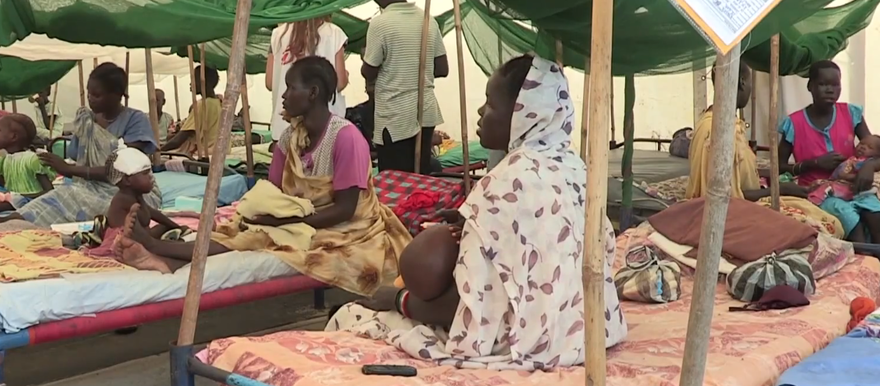Health experts at a conference in South Sudan’s capital are debating exactly how severe the hunger situation is in the world’s newest country, and if the hunger brought on by violence that erupted in December qualifies as a famine.
Experts in South Sudan are using the five-point Integrated Food Security Phase Classification scale to determine if a country is in a Phase 4 humanitarian emergency or a Phase 5 famine. The scale was developed in Somalia in the mid-2000s. A famine is defined as two deaths a day per 10,000 people, malnutrition rates of more than 30 percent and a near complete loss of livelihoods and assets.
An estimated 260,000 people died in the region’s last famine — in Somalia in 2011. Half the victims perished before the formal famine declaration.
“If it’s as bad as famine a declaration can have a significant impact on the level of support that goes toward the crisis,” said Chris Hillbruner, the lead food security analyst for FEWSNET, a famine early warning system created by the U.S. government’s aid agency USAID.
Hillbruner is in Juba, South Sudan’s capital, to participate in the analysis. He said even if the field data does not upgrade the situation from humanitarian emergency to famine on an internationally recognized scale, South Sudan’s current hunger level “is still the worst food security emergency in the world … there is still huge need.”
Access to remote locations is difficult in South Sudan, a country with virtually no paved roads outside Juba. Seasonal rains have muddied dirt airstrips and groups must share travel plans with military and political leaders on the government and rebel sides to ensure safe passage.
Earlier in July there were indications a famine could be declared in August, but it now appears an update won’t be issued for another month, said Challiss McDonough, a WFP spokeswoman. Even without the famine label there are “alarming” levels of malnutrition, she said.
“Whether or not it is a famine, the point is our job is trying to prevent it from becoming a famine,” she said. “And if we have to wait where conditions are so bad that it’s a famine, it’s too late.”
The experts in Juba are discussing issues such as whether food markets are open and how many crops families planted amid the violence that displaced more than 1 million people. Hillbruner said experts wonder if there are regions “people aren’t reaching, that the information is even worse than what we’re seeing.”
Underscoring the situation’s seriousness, the global heads of the World Food Program and UNICEF traveled to South Sudan last week. The groups say nearly 1 million children under age 5 need food deliveries to fight acute malnutrition. An estimated 50,000 children are at risk of death.
“The world should not wait for a famine to be announced while children here are dying,” said UNICEF Executive Director Anthony Lake. “We all have to do more, and quickly, to keep more children alive.”
By Jason Straziuso, Associated Press
Photo: A clinic in Malakal which currently admits about 20 malnourished children per week (UNICEF)



